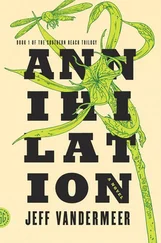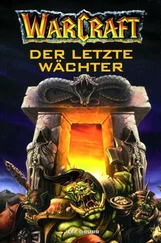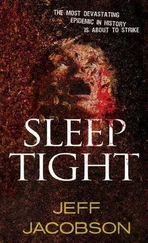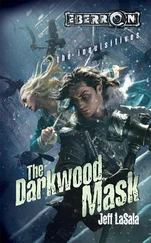Jeff Molofee - NeHe's OpenGL Tutorials
Здесь есть возможность читать онлайн «Jeff Molofee - NeHe's OpenGL Tutorials» весь текст электронной книги совершенно бесплатно (целиком полную версию без сокращений). В некоторых случаях можно слушать аудио, скачать через торрент в формате fb2 и присутствует краткое содержание. Жанр: Программирование, на английском языке. Описание произведения, (предисловие) а так же отзывы посетителей доступны на портале библиотеки ЛибКат.
- Название:NeHe's OpenGL Tutorials
- Автор:
- Жанр:
- Год:неизвестен
- ISBN:нет данных
- Рейтинг книги:3 / 5. Голосов: 1
-
Избранное:Добавить в избранное
- Отзывы:
-
Ваша оценка:
- 60
- 1
- 2
- 3
- 4
- 5
NeHe's OpenGL Tutorials: краткое содержание, описание и аннотация
Предлагаем к чтению аннотацию, описание, краткое содержание или предисловие (зависит от того, что написал сам автор книги «NeHe's OpenGL Tutorials»). Если вы не нашли необходимую информацию о книге — напишите в комментариях, мы постараемся отыскать её.
NeHe's OpenGL Tutorials — читать онлайн бесплатно полную книгу (весь текст) целиком
Ниже представлен текст книги, разбитый по страницам. Система сохранения места последней прочитанной страницы, позволяет с удобством читать онлайн бесплатно книгу «NeHe's OpenGL Tutorials», без необходимости каждый раз заново искать на чём Вы остановились. Поставьте закладку, и сможете в любой момент перейти на страницу, на которой закончили чтение.
Интервал:
Закладка:
DEVMODE dmScreenSettings; // Device Mode
memset(&dmScreenSettings,0,sizeof(dmScreenSettings)); // Makes Sure Memory's Cleared
dmScreenSettings.dmSize=sizeof(dmScreenSettings); // Size Of The Devmode Structure
dmScreenSettings.dmPelsWidth = width; // Selected Screen Width
dmScreenSettings.dmPelsHeight = height; // Selected Screen Height
dmScreenSettings.dmBitsPerPel = bits; // Selected Bits Per Pixel
dmScreenSettings.dmFields=DM_BITSPERPEL|DM_PELSWIDTH|DM_PELSHEIGHT;
In the code above we clear room to store our video settings. We set the width, height and bits that we want the screen to switch to. In the code below we try to set the requested full screen mode. We stored all the information about the width, height and bits in dmScreenSettings. In the line below ChangeDisplaySettings tries to switch to a mode that matches what we stored in dmScreenSettings. I use the parameter CDS_FULLSCREEN when switching modes, because it's supposed to remove the start bar at the bottom of the screen, plus it doesn't move or resize the windows on your desktop when you switch to fullscreen mode and back.
// Try To Set Selected Mode And Get Results. NOTE: CDS_FULLSCREEN Gets Rid Of Start Bar.
if (ChangeDisplaySettings(&dmScreenSettings,CDS_FULLSCREEN)!=DISP_CHANGE_SUCCESSFUL) {
If the mode couldn't be set the code below will run. If a matching fullscreen mode doesn't exist, a messagebox will pop up offering two options… The option to run in a window or the option to quit.
// If The Mode Fails, Offer Two Options. Quit Or Run In A Window.
if (MessageBox(NULL,"The Requested Fullscreen Mode Is Not Supported By\nYour Video Card. Use Windowed Mode Instead?", "NeHe GL", MB_YESNO|MB_ICONEXCLAMATION) == IDYES) {
If the user decided to use windowed mode, the variable fullscreen becomes FALSE, and the program continues running.
fullscreen=FALSE; // Select Windowed Mode (Fullscreen=FALSE)
} else {
If the user decided to quit, a messagebox will pop up telling the user that the program is about to close. FALSE will be returned telling our program that the window was not created successfully. The program will then quit.
// Pop Up A Message Box Letting User Know The Program Is Closing.
MessageBox(NULL,"Program Will Now Close.", "ERROR", MB_OK|MB_ICONSTOP);
return FALSE; // Exit And Return FALSE
}
}
}
Because the fullscreen code above may have failed and the user may have decided to run the program in a window instead, we check once again to see if fullscreen is TRUE or FALSE before we set up the screen / window type.
if (fullscreen) // Are We Still In Fullscreen Mode?
{
If we are still in fullscreen mode we'll set the extended style to WS_EX_APPWINDOW, which force a top level window down to the taskbar once our window is visible. For the window style we'll create a WS_POPUP window. This type of window has no border around it, making it perfect for fullscreen mode.
Finally, we disable the mouse pointer. If your program is not interactive, it's usually nice to disable the mouse pointer when in fullscreen mode. It's up to you though.
dwExStyle=WS_EX_APPWINDOW; // Window Extended Style
dwStyle=WS_POPUP; // Windows Style
ShowCursor(FALSE); // Hide Mouse Pointer
} else {
If we're using a window instead of fullscreen mode, we'll add WS_EX_WINDOWEDGE to the extended style. This gives the window a more 3D look. For style we'll use WS_OVERLAPPEDWINDOW instead of WS_POPUP. WS_OVERLAPPEDWINDOW creates a window with a title bar, sizing border, window menu, and minimize / maximize buttons.
dwExStyle=WS_EX_APPWINDOW | WS_EX_WINDOWEDGE; // Window Extended Style
dwStyle=WS_OVERLAPPEDWINDOW; // Windows Style
}
The line below adjust our window depending on what style of window we are creating. The adjustment will make our window exactly the resolution we request. Normally the borders will overlap parts of our window. By using the AdjustWindowRectEx command none of our OpenGL scene will be covered up by the borders, instead, the window will be made larger to account for the pixels needed to draw the window border. In fullscreen mode, this command has no effect.
AdjustWindowRectEx(&WindowRect, dwStyle, FALSE, dwExStyle); // Adjust Window To True Requested Size
In the next section of code, we're going to create our window and check to see if it was created properly. We pass CreateWindowEx() all the parameters it requires. The extended style we decided to use. The class name (which has to be the same as the name you used when you registered the Window Class). The window title. The window style. The top left position of your window (0,0 is a safe bet). The width and height of the window. We don't want a parent window, and we don't want a menu so we set both these parameters to NULL. We pass our window instance, and finally we NULL the last parameter.
Notice we include the styles WS_CLIPSIBLINGS and WS_CLIPCHILDREN along with the style of window we've decided to use. WS_CLIPSIBLINGS and WS_CLIPCHILDREN are both REQUIRED for OpenGL to work properly. These styles prevent other windows from drawing over or into our OpenGL Window.
if (!(hWnd=CreateWindowEx(dwExStyle, // Extended Style For The Window
"OpenGL", // Class Name
title, // Window Title
WS_CLIPSIBLINGS | // Required Window Style
WS_CLIPCHILDREN | // Required Window Style
dwStyle, // Selected Window Style
0, 0, // Window Position
WindowRect.right - WindowRect.left, // Calculate Adjusted Window Width
WindowRect.bottom - WindowRect.top, // Calculate Adjusted Window Height
NULL, // No Parent Window
NULL, // No Menu
hInstance, // Instance
NULL))) // Don't Pass Anything To WM_CREATE
Next we check to see if our window was created properly. If our window was created, hWnd will hold the window handle. If the window wasn't created the code below will pop up an error message and the program will quit.
{
KillGLWindow(); // Reset The Display
MessageBox(NULL,"Window Creation Error.","ERROR",MB_OK|MB_ICONEXCLAMATION);
return FALSE; // Return FALSE
}
The next section of code describes a Pixel Format. We choose a format that supports OpenGL and double buffering, along with RGBA (red, green, blue, alpha channel). We try to find a pixel format that matches the bits we decided on (16bit, 24bit, 32bit). Finally we set up a 16bit Z-Buffer. The remaining parameters are either not used or are not important (aside from the stencil buffer and the (slow) accumulation buffer).
static PIXELFORMATDESCRIPTOR pfd= // pfd Tells Windows How We Want Things To Be
{
sizeof(PIXELFORMATDESCRIPTOR), // Size Of This Pixel Format Descriptor
1, // Version Number
PFD_DRAW_TO_WINDOW | // Format Must Support Window
PFD_SUPPORT_OPENGL | // Format Must Support OpenGL
PFD_DOUBLEBUFFER, // Must Support Double Buffering
PFD_TYPE_RGBA, // Request An RGBA Format
bits, // Select Our Color Depth
0, 0, 0, 0, 0, 0, // Color Bits Ignored
0, // No Alpha Buffer
Интервал:
Закладка:
Похожие книги на «NeHe's OpenGL Tutorials»
Представляем Вашему вниманию похожие книги на «NeHe's OpenGL Tutorials» списком для выбора. Мы отобрали схожую по названию и смыслу литературу в надежде предоставить читателям больше вариантов отыскать новые, интересные, ещё непрочитанные произведения.
Обсуждение, отзывы о книге «NeHe's OpenGL Tutorials» и просто собственные мнения читателей. Оставьте ваши комментарии, напишите, что Вы думаете о произведении, его смысле или главных героях. Укажите что конкретно понравилось, а что нет, и почему Вы так считаете.








